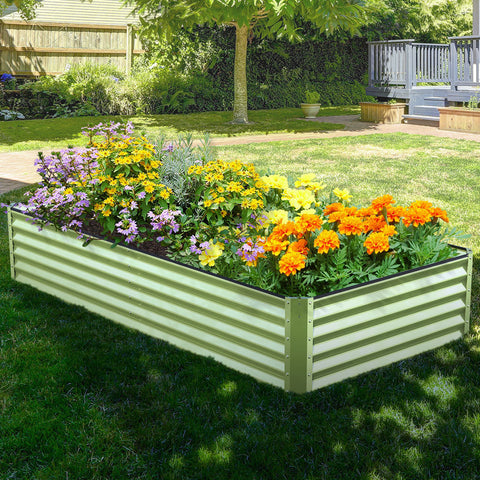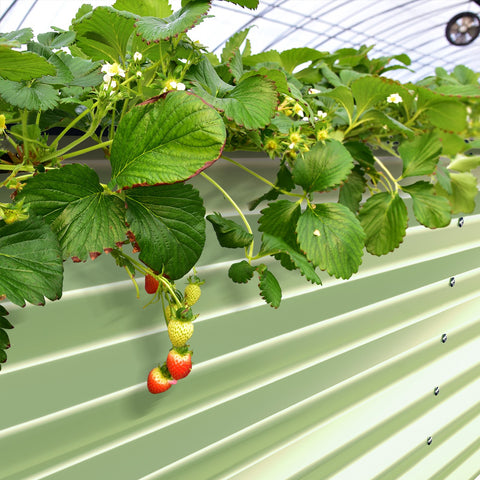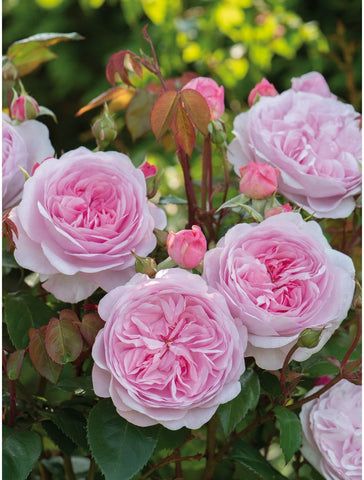July is typically the hottest month of the year in the United States, and your plants know it. Cold-weather crops like lettuce and spinach resist the heat and become tough and bitter, while herbs like cilantro bloom quickly and die. Columbines, bloodhearts and other early blooming ornamentals, including spring bulbs and many wildflowers, either stop blooming or, like pansy, become leggy or even difficult to survive. The following content also has some reference value for raised garden beds.
If you plant in the spring, foods you like hot, like tomatoes and beans, are probably still in production, and herbs like rosemary, thyme and sage are thriving. But don't worry. Even if you don't get up early, there's still time to grow plenty of vegetables, herbs, and lovely flowers.

The key: if you plant a garden in a cooler area, plant mature crops and ornamentals that bloom before the first frost in the fall. If you plant in a warm area and the first frost comes later in the fall, you can plant plants that take longer to mature or flower.
How do you know what to plant in July
Many gardeners do continuous planting in July, which means they have planted a crop and they are ready to plant it again. Even if this is your first time planting, you need to know some dates.
If you grow plants from seed, read the seed package to see how many days it takes each vegetable to ripen or each flower to bloom. If you are growing vegetables from tender plants, sometimes called starter or transplanting, check their labels or tags, or do some research to find this information. (If you're planting young flowering plants, they're probably already in bloom.)
Next, find out the average first frost date in your area. Your local extension service or your neighbor's gardener may be able to tell you. Choose varieties that will bloom before that date. Some will be labeled "precocious."
For example, if your average first fall frost is November 13, and you plant in early July, you'll need a pumpkin variety that ripened before then. Most pumpkins take 90 to 120 days, so you'll need pumpkin varieties that will be ready in around 85 days, such as miniature "little Jacks." Remember: Average frost dates are only estimates, so your plants may be affected by earlier, unexpected frosts. It's a good idea to add a little extra time to your planting schedule or be prepared to protect your plants. (If you're in USDA Gardening Zone 3, your growing season is one of the shortest in the United States. Temperatures there can drop to minus 30 degrees.)

Vegetables planted in July
Most tomatoes take about 100 days to bear fruit, so if you plant in July, choose a fast growing variety. The "early girls" will be harvested in about 50 days.
Asian green
beet
broccoli
Beans (bush beans usually ripen faster than lentils)
cabbage
Carrots (planted no later than mid-July)
cauliflower
kale
cucumber
kale
leek
Lettuce (heat and moss tolerant variety)
pea
pumpkin
radish
pumpkin
Swiss chard
Tomatoes (transplanting); Also, the temperature must be below 90 degrees or the fruit will not set.
zucchini
What to plant in cool areas in July
Parsley is an easy herb to plant and is ready to be picked about eight weeks after sowing.
arugula
coriander
lettuce
parsley
spinach
Plant herbs in July
July is also a great time to plant fast-growing herbs such as coriander, basil, parsley, oregano, rosemary, leek, dill, sage and thyme. Start with seeds, or buy seedlings. If you want to bring them indoors for the winter, place them in containers in a bright window.
Flower seed packets will usually give you some basic growth information, such as the best month to plant.
Flowers are planted in July
While you can plant perennials at any time of year - as long as your soil isn't frozen or too wet to work - they're best planted in the spring or fall. This gives them time to take root before the hot summer months arrive. If you plant perennials in July - you may find them on sale at that time - water and mulch them.

You can also plant annual flowers by transplanting, or seed fast-growing annuals in July.
Think about these:
Fragrant snowball
California poppy
Chrysophora L
cornflower
universe
calendula
Morning glory
Migratory plants (may recover as perennials in warmer climates)
sunflower
Zinnias
The secret to success in July planting
Garden in the morning or evening because it is cool and less stressful on the plants. Cloudy days are good too.
If it is very hot in July, protect the seedlings from the sun with a floating row cover or shade cloth.
Keep seedlings and seedlings constantly moist. Don't let the seedbed dry out.
If your plants or seeds don't do this, try planting drought-tolerant succulents. Give them at least some sunlight. Pot them as houseplants before the temperature drops.
Mulch your plants with weed-free straw or chopped leaves to suppress weeds and help retain moisture.
If you don't have enough space in your garden, plant in containers or windowsill boxes. One benefit: you can move them to the shade if you need to.









